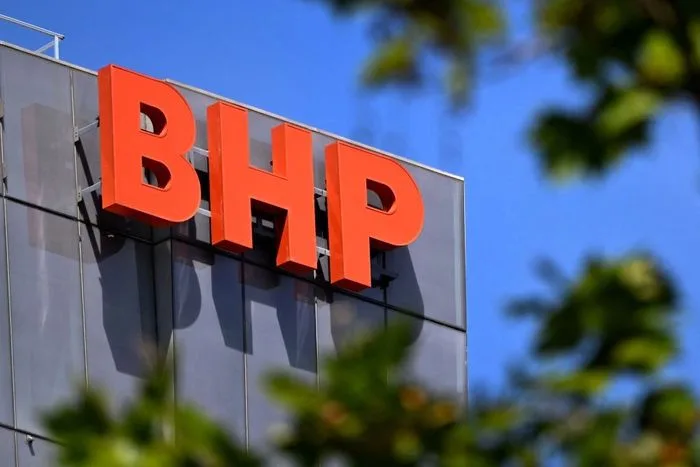By Monica O’Shea
Global mining giant BHP insists demand for commodities from India and China remains strong despite recording an underlying profit fall as iron ore and coal prices fell.
BHP reported (pdf) a US$10.2 billion (AU$15.7 billion) profit in the 2025 financial year.
However, overall revenue fell US$4.4 billion amid falling iron and coal prices.
The mining giant did achieve record iron ore and copper production, along with more steelmaking coal.
At the time of writing, the BHP share price has risen 1.62 percent on Aug. 19 to $42.14 on the back of these results.
BHP Chief Executive Officer Mike Henry said the 2025 financial year was another “strong year” for the company marked by record production.
Record Iron and Copper Production
The company set new records for copper and iron production. For the first time, copper production was above 2 million metric tonnes (Mt), 28 percent higher than three years ago.
“We maintained our position as the world’s lowest-cost major iron ore producer at Western Australian Iron Ore where we delivered 290 Mt–a new production record,” Henry said.
BHP’s Jansen project in Canada is expected to deliver maiden potash production—used in fertilisers—by the middle of 2027, Henry highlighted.
“We are optimising our growth program at Escondida in Chile, Copper South Australia has the potential to double production through phased expansions and the Vicuña project in Argentina is advancing towards a multi-decade copper opportunity,” he said.
“At Western Australian Iron Ore, over the medium term we are targeting sustained production of greater than 305 Mtpa.”
China, India Commodity Demand Strong
Henry described the global economic outlook as “mixed.”
“Growth is expected to ease to 3 percent or slightly below in the near-term amid shifting trade policies, yet demand for commodities remains strong, particularly in China and India,” Henry said.
“Chinese copper demand outperformed in FY25, while iron ore demand was resilient, driven by strong infrastructure investment and manufacturing activity in China.”
Henry expressed confidence in coal and potash markets amid policy shifts overseas.
“Steelmaking coal prices have softened due to oversupply, though policy shifts in China and new blast furnace capacity in Asia are expected to support the market,” Henry said.
“Potash markets are expected to continue to benefit from a growing and wealthier population and the need for more sustainable agriculture.”
He said urbanisation and the push for net zero would grow demand for steelmaking material, copper, and fertiliser.
“We remain confident in the long-term fundamentals of steelmaking materials, copper and fertilisers, which are critical to global growth, urbanisation and the energy transition,” Henry said.
“Backed by a diversified portfolio of large, long-life assets, disciplined low-cost operations and a strong balance sheet, BHP is well-positioned to deliver enduring value through the cycle.”
Reflecting on Indian commodity demand, BHP said that would grow, but competing imports from China squeezed margins for the steel industry in the last year.
“We expect the country’s economic growth to remain resilient over the next two years, supported by strong structural fundamentals and long-term development momentum,” BHP said.
The company said manufacturing exports to emerging economies remained solid, offsetting “weaker direct exports to the United States.”
BHP Update on Social Justice Cause
BHP also provided an update on its social justice and climate initiatives.
The company said they were on track to cut greenhouse gas emissions by 30 percent from 2020 levels by the year 2030. Further, management said they achieved gender balance within their global employee base in April.
On Indigenous procurement, BHP said this had increased by 40 percent in the last year.
While on the environmental front, the company unveiled plans for a 158,000-hectare conservation project at Copper South Australia.
What Were the Key Numbers?
BHP’s revenue declined 8 percent to US$51.3 billion in the 2025 financial year (FY25) down from US$55.7 billion in the 2024 financial year (FY24).
The company’s attributable profit increased by 14 percent to US$9 billion, up from US$7.9 billion in FY24.
Underlying EBITDA (earnings before interest, taxes, depreciation, and amortisation) slid 10 percent to US$26 billion amid lower revenue. Copper sales accounted for 45 percent of underlying EBITDA.
The company’s profit from operations rose 11 percent to US$19.5 billion. BHP’s adjusted effective tax rate rose to 37.2 percent in FY25, up from 32.5 percent in FY24.
BHP’s underlying EBITDA margin was 53 percent in FY25, down from 54 percent in FY24. Underlying EBITDA margin reflects the company’s core profitability.
The adjusted effective tax rate for the company was 37.2 percent, up from 32.5 percent in the 2024 financial year.
BHP will pay a final fully franked dividend of 60 cents per share to shareholders on Sept. 25.
Since Jan. 2020, BHP says it has returned US$59 billion cash to shareholders.





